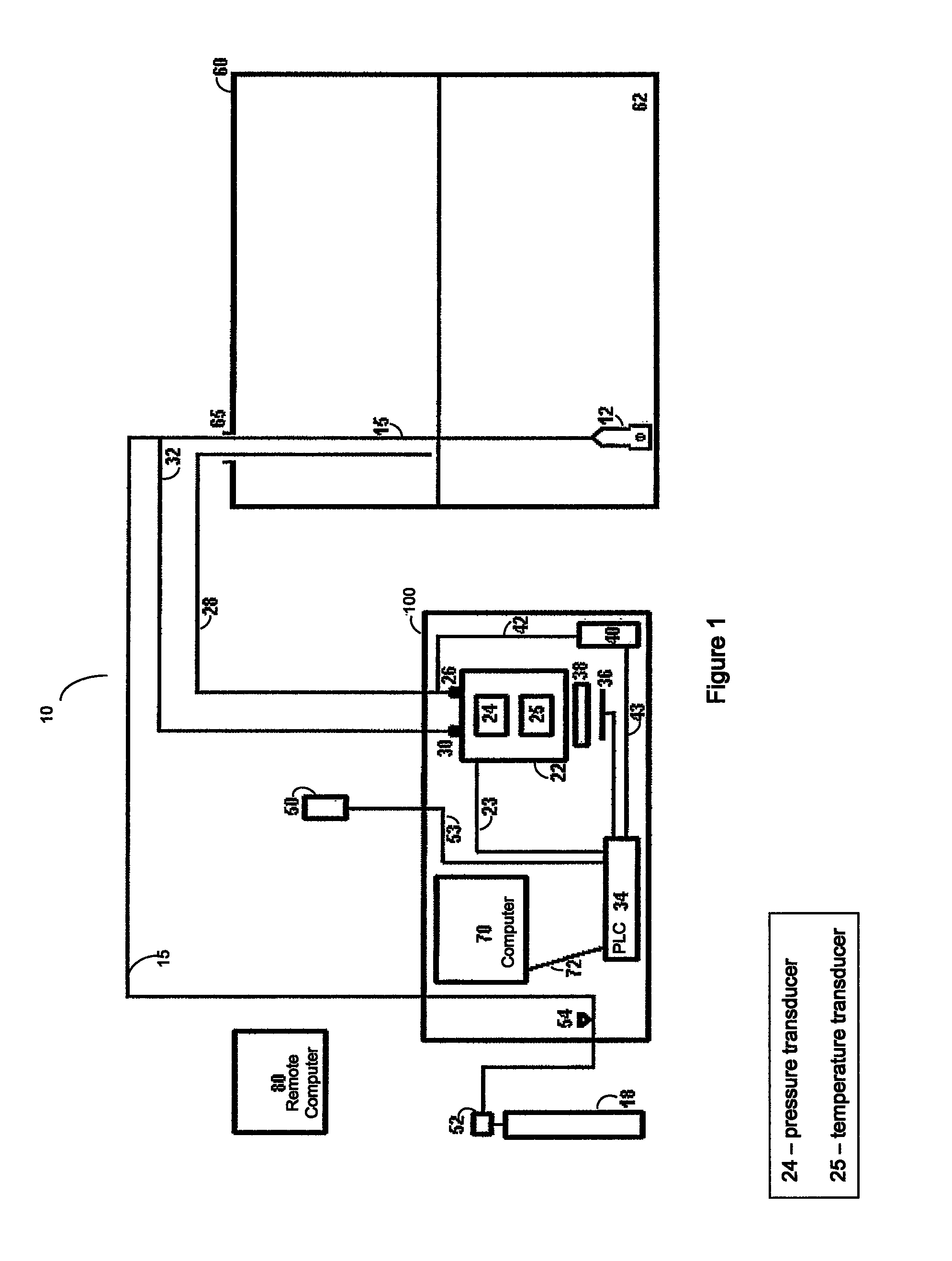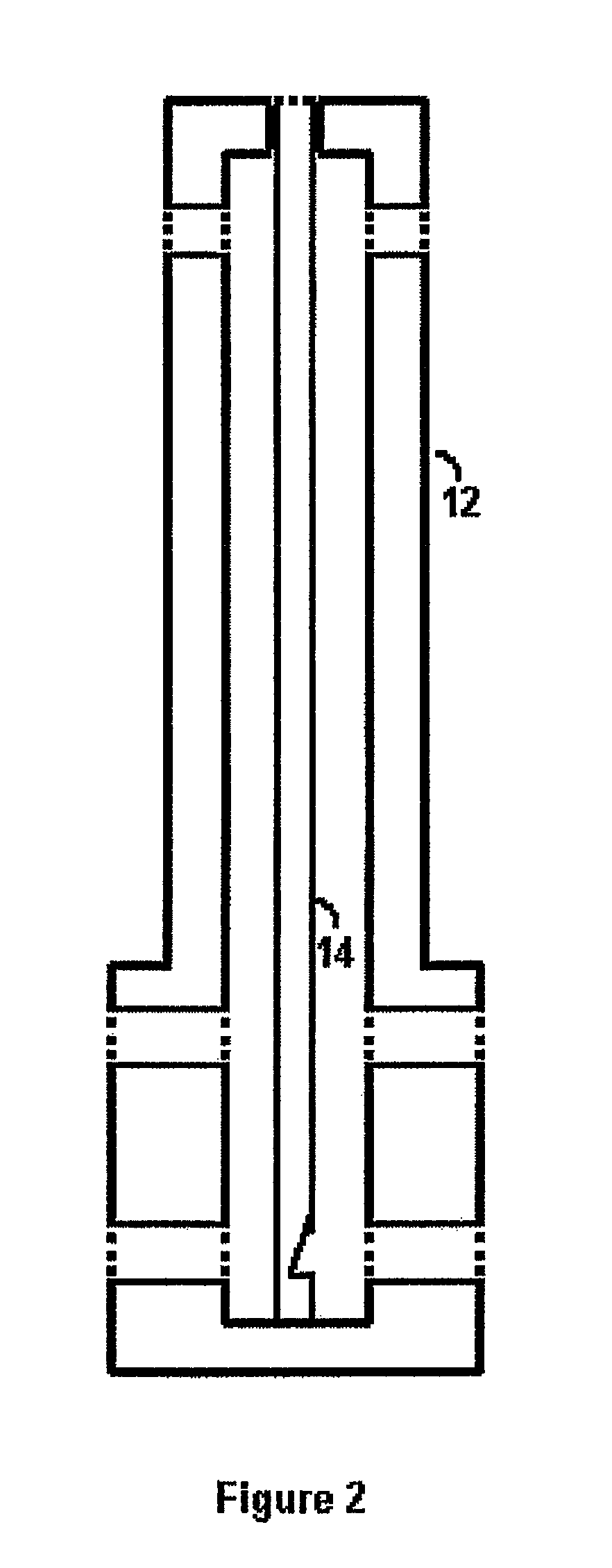System and method for detecting and quantifying changes in the mass content of liquid storage containers
a liquid storage container and mass content technology, applied in fluid tightness measurement, instruments, machines/engines, etc., can solve the problems of high detection threshold, easy to see the difficulty in preventing and detecting leakage, and insufficient mitigation of duties or liabilities of responsible parties, so as to reduce the detection threshold and preserve industrial and environmental resources.
- Summary
- Abstract
- Description
- Claims
- Application Information
AI Technical Summary
Benefits of technology
Problems solved by technology
Method used
Image
Examples
Embodiment Construction
[0079]In the drawings and the description that follows, FIGS. 1 and 2 generally depict a preferred configuration and constituency of a storage tank leak detection system according to the present invention, which system is generally designated by the reference number 10.
[0080]The preferred embodiment of the present invention includes an inert gas pressure reduction 52 and flow rate regulator 54 which provide a clean and steady supply of an inert gas, such as nitrogen, from a compressed cylinder 18 to an in-tank bubbler 12 via bubbler tube 15.
[0081]The in-tank bubbler 12, which is placed substantially at the bottom of a to-be-evaluated storage tank 60, releases inert gas bubbles in a consistent manner with minimal pressure variation. The minimum inert gas pressure required to consistently form and release bubbles at the bottom of the tank's contents serves as a proxy for the hydrostatic pressure at the bottom of the tank.
[0082]The formation and release of inert gas bubbles in a consis...
PUM
 Login to View More
Login to View More Abstract
Description
Claims
Application Information
 Login to View More
Login to View More - R&D
- Intellectual Property
- Life Sciences
- Materials
- Tech Scout
- Unparalleled Data Quality
- Higher Quality Content
- 60% Fewer Hallucinations
Browse by: Latest US Patents, China's latest patents, Technical Efficacy Thesaurus, Application Domain, Technology Topic, Popular Technical Reports.
© 2025 PatSnap. All rights reserved.Legal|Privacy policy|Modern Slavery Act Transparency Statement|Sitemap|About US| Contact US: help@patsnap.com



